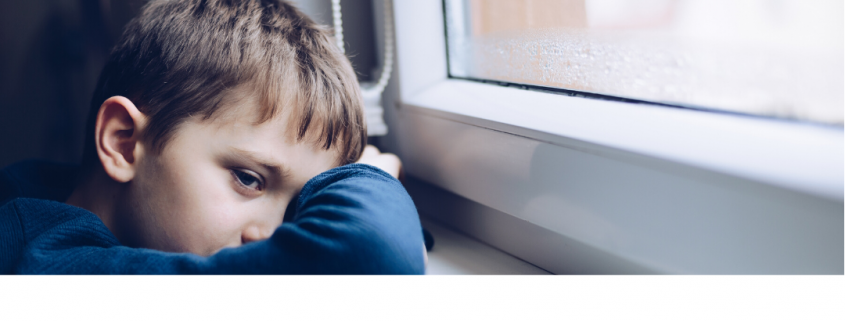

What is it like to be a child during COVID-19? The answer can vary wildly based on factors like access to services, parental mental health, the state of the environment we are isolated in and physical vulnerability. The world is beginning to pick up the pieces of what may turn out to be one of the most worrisome periods of time for child safety and development in the United Kingdom. The same goes for many other parts of the globe.
The reality is that countless children have been living in sub-optimal conditions that include living through parental separation, impaired parental mental health and domestic abuse while being cut off from the “lifelines” that they typically utilise. It will undoubtedly be a while before we can calculate the full extent of the situation, however, that doesn’t mean that we have a while until we can begin implementing procedures and take action to provide the support that’s needed for positive growth for children moving forward.
The fact that children do not appear to be in the high-risk category for contracting or dying from COVID-19 has potentially caused far too many to prematurely breathe a collective sigh of relief. Yes, the news that COVID-19 does not necessarily pose a high direct risk to the majority of children is certainly something to celebrate. However, secondary risks are plentiful.
“Moreover, the harmful effects of this pandemic will not be distributed equally. They are expected to be most damaging for children in the poorest countries, and in the poorest communities, and for those in already disadvantaged or vulnerable situations,” says a United Nations briefing on the crisis among children. The United Nations warns that an estimated 42 million to 46 million children around the world are at risk of falling into extreme poverty as a result of the COVID-19 crisis. The events of 2020 could also exacerbate the existing learning crisis that is being seen around the world. The widespread closure of schools will have set children in the United Kingdom and the rest of the world back by nearly a full year in some situations. Yes, distance-learning programs have indeed been introduced in many schools around the world, however, the limitations that are present for low-income children who may not have access to technology or home-based learning support are apparent.
Unfortunately, the United Nations now estimates that the widespread economic hardship being seen could result in hundreds of thousands of child deaths throughout the rest of 2020. This news is especially heartbreaking for those of us who have been following and championing the profound progress that has been made in reducing childhood and infant mortality in recent years, but what are the specific risk factors that are making some children especially vulnerable during COVID-19.
What Are Some of the Risk Factors That Make COVID-19 Particularly Devastating for Some Children?
The massive shift in day-to-day life that has resulted from COVID-19 lockdown policies has put some vulnerable children in even more vulnerable positions. This is because children in sub-optimal home-life situations have lost access an often-overlooked protective factor of the nourishment, support, monitoring and accountability that attending school provides them. By attending school and being looked after by education staff, most of these children are off the radar of requiring more support from agencies. However, this resource has now gone away and these vulnerable children are now not being seen or heard by anyone. Here’s a look at resources that have been decreased or eliminated:
- School and classroom support
- Friendships and peer support
- School meals
- Health and wellbeing monitoring
- Community based support network
- Play
- Respite for child and parent
As the above factors suggest, the mental well-being of children is being put in significant jeopardy during periods of extended isolation. Children who are placed in the positions of being caregivers are carrying a particularly dramatic burden during the quarantine. Additionally, children living in ‘under the radar’ abusive environments have essentially lost all social and monitoring outlets.
Putting the Lens on the United Kingdom
Children around the world will be dealing with the repercussions of the COVID-19 pandemic for years to come. The consequences may help to define a generation for better or worse. This is truly a global problem that will require global collaboration. However, children in the United Kingdom are facing very specific and particular challenges. It is now clear that the 17,000 primary schools within England will not be fully reopening their doors before next autumn. It can be difficult for parents, educators and students to be wholly optimistic in the face of that news because England’s 8.8 million school-aged children will have gone nearly six months without any standardised, in-person education when they make their return. This will create a challenging scenario for all involved.
What’s more, it may also highlight and accentuate the gaps between children with access to resources beyond the classroom and children without such access. Unfortunately, vulnerable students will have spent six months without buffers from neglect and abuse in many cases. They will have gone nearly half a year without the ability to confide in teachers, receive motivation or seek much-needed support and encouragement.
The Work Must Begin Now
Unfortunately, the tendency among adults far too often is to rely on the resiliency of children. The reality is that children in the United Kingdom and the rest of the world will need support like never before. Many professionals who work within the field of children’s mental-health are already seeing a huge spike in need due to the repercussions stemming from COVID-19. What we are witnessing at present is that this is having an impact on children in all situations, and we need to make sure that all children are being heard.
We ultimately don’t have a way to properly and fully anticipate the long-term impact of COVID-19 from where we stand today. We do however have the ability to begin putting together actions and resources that we know to be beneficial for children in crisis. What is the big takeaway when learning about the seriousness of the impact of COVID-19 on children? Professionals need to take stock of the mental and physical states of all children, not just those known to services already, to make sure that the proper level of concern is being invested and no child fall’s between the gaps. In addition, proper channels for providing appropriate levels of support should be pursued.
Of course, it is a huge job to ensure that resources, funding and programs are available for the professionals who work on the ground with children as they take on this enormous task. It is now crucial for the not for profit organisations and charities who work in the communities they serve to be fully supported in this work as they themselves have been hit dramatically from a negative financial perspective and a huge increase in requests for support.
The ultimate goal is to get all children reintegrated into society while reducing any long-lasting adverse effects by as much as possible. This can be done when we all face the reality that the unfolding of the COVID-19 pandemic isn’t something that all children will necessarily “bounce back” from without targeted and effective interventions. One nearly sure thing is that children will face a whole host of new challenges when they finally do all return to classroom settings that will have to appear and function quite differently from the learning environments they remember.


